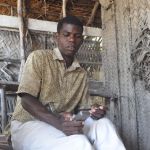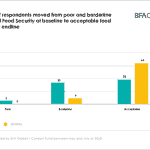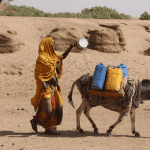A Field-Based Perspective on Sub-Saharan Africa’s Agriculture Crisis: Exploring the Four Critical Dimensions that are Driving Food Insecurity
Food insecurity is no longer just a humanitarian concern in sub-Saharan Africa: It is a business issue. In my work as a researcher and entrepreneur focused on sustainable agriculture, I have interacted with smallholder farmers, agribusiness enterprises and policy institutions across the region. In the process, I have come to understand that food insecurity constitutes a fundamental business risk with far-reaching implications for the continent’s economic growth, supply chain stability and geopolitical resilience.
The agricultural challenges facing the region are not isolated or incidental; they are structural, multifaceted and growing in urgency. Climate change, infrastructural gaps, policy failures and socioeconomic inequities are intersecting in ways that undermine both agricultural productivity and long-term development. Fortunately, many of the solutions are already known. What remains is the imperative to mobilize resources, align governance structures and implement these solutions at scale.
This article offers a field-based perspective on four critical dimensions shaping the region’s food security crisis.
Climate Change and Environmental Pressures
Sub-Saharan Africa is currently the most climate-vulnerable agricultural region in the world. This vulnerability is rooted in the fact that approximately 96% of its cropland relies entirely on rainfall. I have observed firsthand how this reliance has become a liability, as farmers contend with late-onset rains, early-season droughts and erratic weather patterns that no longer conform to traditional planting calendars.
Temperature variability further exacerbates this issue. Even minor increases in average temperature negatively impact crop development, particularly during critical growth phases. If current warming trends persist, yields of staple crops such as maize, millet and sorghum may decline by as much as 20% by 2100.
These climatic shifts are compounded by severe environmental degradation. It is estimated that 65% of arable land in the region is degraded, largely due to erosion, deforestation and unsustainable agricultural practices. In the Sahel region, desertification continues to expand, while in East Africa, prolonged droughts have depleted groundwater reserves and devastated pasturelands.
Nevertheless, these challenges also highlight untapped opportunities. Research indicates that approximately 35% of rain-fed farmland in the region could be irrigated, provided that water availability is harnessed and supported by appropriate infrastructure. Based on both field experience and recent studies, solar-powered irrigation has the potential to more than double yields under suitable conditions.
Policy Failures and Governance Challenges
In sub-Saharan Africa, the gap between agricultural policy frameworks and their implementation remains one of the most persistent challenges. Although national governments routinely allocate budgets for rural infrastructure and agricultural input subsidies and extension services, the execution of these plans is frequently undermined by weak institutions, corruption and political interference.
The struggles of farm subsidy programs illustrate this issue clearly. These initiatives are intended to reduce the cost of inputs for smallholder farmers. However, in many cases, subsidized fertilizer is diverted to politically connected intermediaries or resold at inflated prices, bypassing the intended beneficiaries. In Nigeria, for instance, multiple evaluations have shown that only a fraction of subsidized inputs actually reach the farmers they are meant to support at the subsidized price. These inefficiencies are driven by a lack of transparent distribution systems, inadequate monitoring and limited accountability mechanisms.
Infrastructure projects face similar obstacles. I have visited areas where roads financed by national development plans began to deteriorate within months due to substandard construction and an absence of maintenance planning. Likewise, many rural warehouses have been built without staffing, electricity or transportation links, rendering them ineffective. These outcomes are not the result of budgetary shortfalls but of systemic implementation failures.
Regionally, sub-Saharan Africa has seen increasing efforts to promote cooperative responses to food insecurity. One such initiative is the ECOWAS Regional Food Security Reserve (RFSR), which serves West African countries and has been operational since 2013. This reserve was designed to complement national stocks and assist during food emergencies. The ECOWAS Regional Food Security Reserve was activated 19 times between 2017 and 2024, delivering more than 55,000 tonnes of cereals to six countries: Burkina Faso, Cabo Verde, Ghana, Mali, Niger and Nigeria.
But though these interventions demonstrate the feasibility of regional solidarity, the RFSR continues to face capacity constraints. Its current contracted storage capacity of approximately 58,550 tons remains below the estimated regional needs, and it depends heavily on external donor funding. To address these challenges, governance reforms are essential at both the national and regional levels. Governments must prioritize the development of digital distribution and tracking systems to improve the transparency of subsidy programs. Independent audits and public reporting mechanisms should be instituted to ensure accountability. Furthermore, regional food security initiatives such as the RFSR require predictable funding, binding state commitments and integrated logistics networks to operate effectively during crises.
Technological Gaps and Access to Innovation
Sub-Saharan Africa is home to promising agricultural innovations, from mobile advisory platforms and satellite crop monitoring to improved seed varieties and mechanized services. However, access to these technologies remains limited and highly uneven across regions and communities.
Digital services such as weather forecasting tools and pest alerts have been introduced in several pilot regions, but most farmers remain disconnected from these systems due to low network coverage or lack of training. I have seen examples of apps being introduced without any support to teach farmers how to use them, which leaves their potential unrealized.
Mechanization is another area where inequality is stark. Farmers near towns and leasing hubs are more likely to access tractors or threshers compared to those in more remote areas, where transport costs and service availability are major barriers. As a result, many smallholders continue to rely on manual tools that limit the scale and speed of production.
Even where research institutions have developed high-yield seed varieties and climate-resilient crops, it often takes years for these innovations to reach the farmers who could benefit from them the most. Distribution systems are weak, and extension services such as on-farm demonstrations, mobile advisory units and training workshops are under-resourced. I have met researchers who developed successful crop hybrids that remained in test plots long after the research ended, because the supply chains to deliver them to the field were never built.
To close the innovation gap, governments and their partners must treat agricultural technology as a public good. That means investing not only in tools, but in the systems that deliver them. Training platforms, village-level demonstrations, and subsidized access to equipment and seed should be scaled as part of national agricultural strategies. Inclusion must be a central principle, ensuring that even the most remote communities are not left behind.
Socioeconomic Barriers and Rural Livelihoods
Beyond technology and climate, there are deep social and economic barriers that limit productivity and resilience in rural areas. Land tenure is among the most critical. In many communities, land ownership is not formalized. Customary systems determine who can use land, and these systems often exclude women and youth from secure ownership.
Without land rights, farmers are unlikely to invest in long-term improvements such as irrigation, soil regeneration or tree planting. Women, despite performing the majority of labor on many farms, often lack access to training, finance and decision-making power. In my fieldwork, I have repeatedly seen women doing the hardest agricultural work while having the least say in how land is used or how income is distributed.
Youth exclusion is also growing. Young people are leaving rural areas in search of jobs and opportunity, and many of them never return to farming. The result is an aging rural population that often lacks access to new tools, modern techniques or capital investment. In some regions, farmland is left unused not because it is unproductive, but because there are no workers available.
Social protection systems offer a partial solution. Insurance programs tied to weather patterns can help farmers recover after a shock. Cash transfer schemes can support households during lean periods. However, these programs are often fragmented and not integrated with agricultural support systems. And where food aid is delivered without inputs, training or market access, the result is dependency rather than resilience.
Alongside public interventions, private sector actors are beginning to play a more visible role in bridging these rural gaps. Inclusive agribusiness models such as SheFarms and Babban Gona are helping women and youth gain access to inputs, training and market connections, often bundled into service packages that improve productivity and reduce risk. Fintech companies are developing gender-sensitive microfinance tools that allow rural entrepreneurs to access credit, savings and insurance through mobile platforms. By combining technology, local partnerships and commercial incentives, these business-driven solutions show that economic inclusion can also be profitable.
To support and build upon these emerging solutions, rural development strategies must combine agricultural investment with inclusive social protection. Land reform, financial inclusion and targeted youth employment programs should be built into national plans. Where women and young people are given access to land, inputs and decision-making, the gains in productivity and stability are immediate and long-lasting.
Asamoah Oppong Zadok is a researcher specializing in sustainable agriculture, agribusiness and agricultural policy, and the founder of Sustaina Harvest.
Photo credit: CGIAR Research Program on Dryland Systems
- Categories
- Agriculture, Environment, Technology



